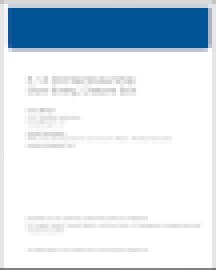In October 2007, Larry Berger, then chief executive of Wireless Generation (which later became Amplify) and his colleague, David Stevenson, a Wireless Gen vice president, gave a presentation at the American Enterprise Institute conference about why entrepreneurs faced formidable obstacles in building technology for schools and districts.
The talk wound up becoming a chapter in a Harvard Education Press book (“The Future of Educational Entrepreneurship: Possibilities for School Reform)” edited by Rick Hess. It has also since become famous in edtech circles. In it, they described 11 significant barriers confronting edtech entrepreneurs and offered five suggestions for making the education environment more friendly to innovation.
So what's changed? More than a decade later, billions of dollars have been poured in education technology. Many of the changes that Berger and Stevenson, who run Amplify (built on Wireless Gen's foundations), longed to see have happened. Some of the barriers have crumbled. Others remain—and new ones have arisen.

K-12 Entrepreneurship: Slow Entry, Distant Exit
Here is the original chapter (in PDF form).
At the EdSurge Immersion conference in San Diego on April 15, Berger will talk about the differences the past decade has wrought on edtech innovation. We'll ask him to explore what still needs to happen to support the kind of technology innovations that educators and students still long to see. (And yes! We will publish notes from the talk! Stay tuned.)
Here's what Berger and Stevenson argued, back in 2007, that policymakers could do to help spur innovators to enter the education space:
Improving the Edtech Environment, 2007
1. Encouraging districts and states to form consortia to pool resources and expertise and so help bring products or services to market.
2. Purchasers could commission research and development projects, rather than fully articulated products.
3. Policymakers could encourage 'disruptive' technologies and innovation through channels such as the X Prize. Open source innovations in education could also receive more support.
4. Changes in procurement policies could make it easier for schools and districts to buy packages that combine products and services.
5. School builders, such as those running charter networks, could talk more with tool builders to share their perspectives and needs.
Read the full paper—which begins with a hauntingly familiar scene. Then check back in a week to explore the differences a decade has made.
"From 32,000 feet on a recent flight, we declared the tangle of lights out the left window to be a “37.” An hour later, the dense cluster by the river was a “54.” When we landed, Google Earth revealed that we have gotten disturbingly good at this game: Little Rock (40 elementary schools) and Wichita (51 elementary schools). We play this game because, as educational entrepreneurs, we are desperate for scale. We operate in a $500 billion market, but the dollars are scattered among 15,000 school districts, few of which are large enough to see from mid-air. We also play this game to distract ourselves from the thought that, while we are flying over these districts, the vast sales forces of the big publishers are already on the ground in them, meeting the Deputy Superintendent at the Rotary Club, luring away the last few discretionary dollars she has......"


